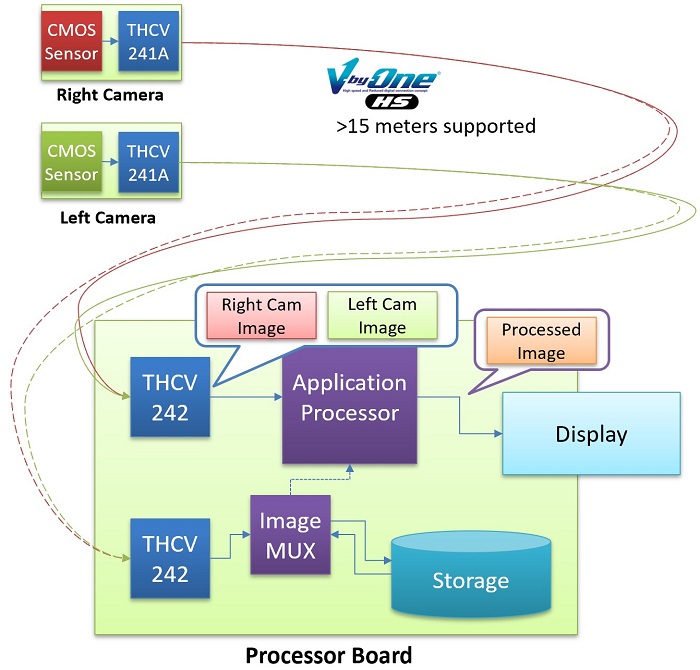By Gina Roos, editor-in-chief
THine Electronics Inc. rolls out its MIPI CSI-2 extension chipset, the THCV241A and THCV242, in high-volume production. The chipset enables designers to extend MIPI CSI-2 transmission from 1 ft. to over 15 m. Applications include 3D visualization and recognition, autonomous cars, robotics, medical equipment, gaming, and XR devices.
The video chips enable designs that can receive two different video inputs simultaneously, as well as applications that can copy and distribute (simultaneously replicate) one video stream into two video streams, said the company.

Demands for higher-resolution and/or higher-frame-rate cameras require MIPI CSI-2 output, which are limited to a short transmission range of approximately 1 ft., said THine. The THCV241A serializes up to four lanes of MIPI CSI-2 signals and converts them into one or two lanes of V-by-One HS, THine’s technology that supports up to 4 Gbits/s per lane. This enables the transmission of 1080p60 2-megapixel uncompressed video for greater than 15 m with typical cables. The THCV242 chip deserializes up to two V-by-One HS lanes back to the original MIPI CSI-2 signal.
The THCV241A device’s two lanes of V-by-One HS support up to an 8-Gbits/s data rate, with the capability to use the second V-by-One HS lane to support data copy and distribution (replication) applications.

The chipset supports “Sub-Link” that aggregates bidirectional low-speed signals. The separation of the high-speed signal path, V-by-One HS, and Sub-Link enables easy debugging and provides more options for physical harnesses, including the utilization of Keyssa’s contactless connection for systems that require a ruggedized, low-latency, detachable camera.
The chipset is now available through major distributors, including Digi-Key.
Advertisement
Learn more about Electronic Products Magazine





